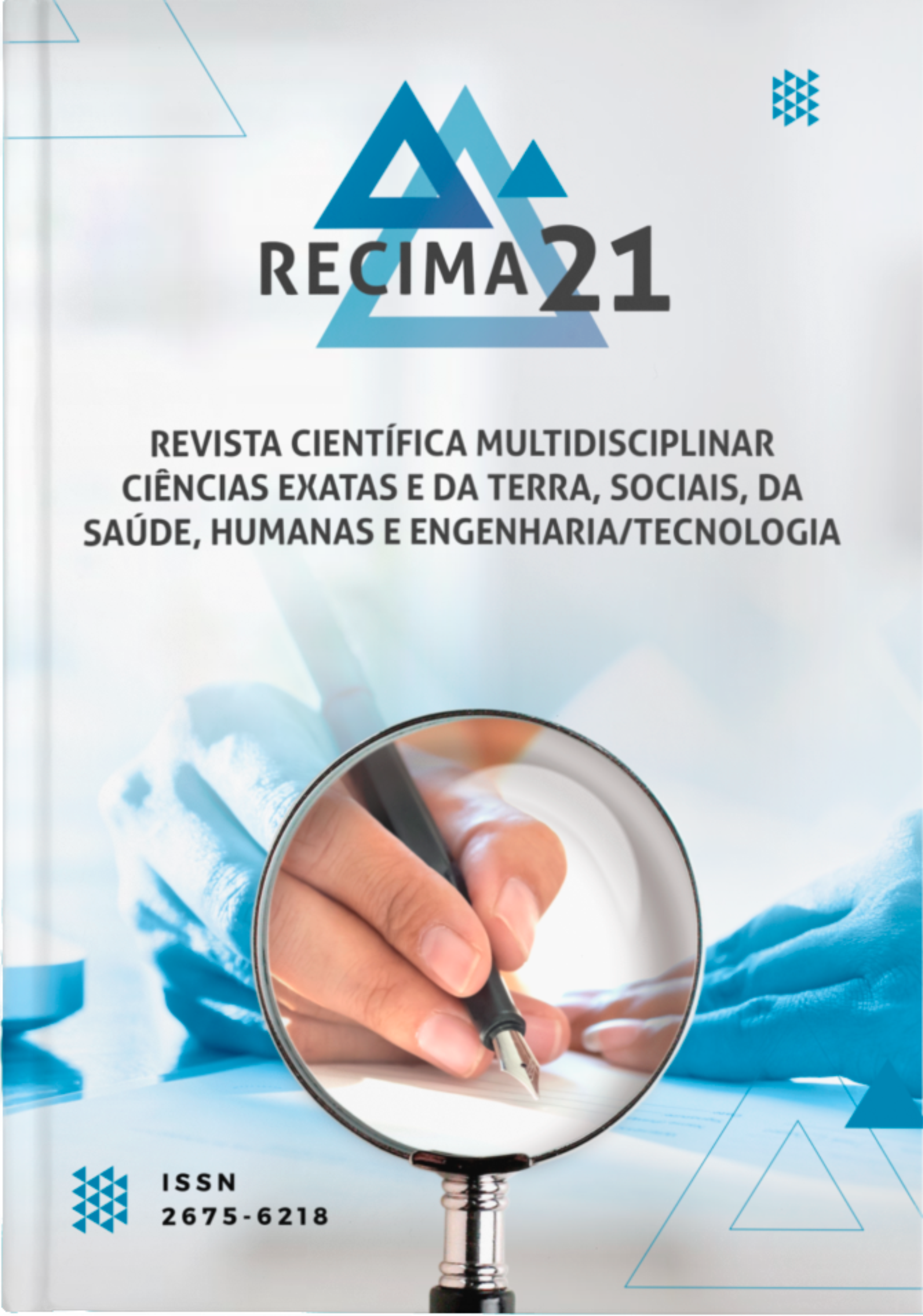THE PERFORMANCE OF PHYSIOTHERAPY IN THE TREATMENT OF CONGENITAL CROOKED FOOT: CASE STUDY.
DOI:
https://doi.org/10.47820/recima21.v2i10.870Keywords:
Clubfoot, Congenital, Physiotherapy, Congenital deformityAbstract
Congenital clubfoot is considered by some studies as the most common congenital deformity, reaching 1 in every 1000 live births. It occurs due to an alteration in the deposition of the posteromedial collagen of the leg, causing a deformity in the cavus, adductor, varus and equinus, with a shorter leg and foot than the unaffected one. Quality of life has been experienced as a goal to be achieved by different age groups, including the different stages of the human evolutionary cycle. In this way, the factors that involve the quality of life are different, and among them the health conditions and mobility of people can be mentioned. A case study was carried out based on the documentary analysis of the medical record of the physiotherapeutic evolution of a patient diagnosed with congenital clubfoot in order to describe the evolution of the treatment during the rehabilitation sessions. The data collected from this exploratory study demonstrated that the implementation of non-invasive maneuvers such as the Kite and Ponseti method in the treatment of congenital clubfoot are efficient, satisfactory and cost-effective. At the end of the treatment of the clinical case, it can be noted that the patient acquired a better quality of life through increased range of motion (ROM) of up to 10°, strength gain to grade 5 (previously grade 4) , with weight bearing training, a better body alignment can be gained, distributing the body mass, thus removing the excessive load on the joints in question.
Downloads
References
• ANDRADE, Nacélia et al. Método de Ponseti como forma de tratamento de pé torto congênito em um município Brasileiro. Brazilian Journal of Developmen, v.7, n.2, p. 13386, 2021. Disponível em: https://www.brazilianjournals.com/index.php/BRJD/article/view/24346/19450. Acesso em 18 out. 2021.
• BELTRAME, Beatriz. Tratamento para pé toro congênito. Tua Saúde. 2020. Disponível em: https://www.tuasaude.com/pe-torto-congenito/. Acesso em 18 out. 2021.
• CURY, L. A. et al.. (2015). Análise da eficácia do tratamento pelo método de Ponseti no pé torto congênito idiopático. Revista Da Faculdade De Ciências Médicas De Sorocaba, 17(1), 33–36. Disponível em: https://revistas.pucsp.br/index.php/RFCMS/article/view/20920. Acesso em: 18 out. 2021.
• FERNANDES, Woquiton. L. O impacto de filhos com pé torto congênito em suas famílias. . VIII Encontro da associação brasileira de pesquisadores em educação especial. São Carlos- SP. 2013.
• GALINDO, Thalitta Jamillye Freire; PAZ, Adeline Soraya de Oliveira. Aplicabilidade fisioterapêutica no pé torto congênito equino-varo em crianças de o a 3 anos. Inter Fisio. 2017. Disponível em: https://interfisio.com.br/aplicabilidade-fisioterapeutica-no-pe-torto-congenito-equino-varo-em-criancas-de-0-a-3-anos/#. Acesso em: 19 out. 2021.
• GUERSCHMAN, Tatiana de Moura; NOGUEIRA, Monica Paschoal. Método Ponseti no tratamento de pé torto congênito recidivado em criança de 9 anos. São Paulo-SP, 2020.
• JAQUETO, Pedro Augusto, et al. Resultados funcionais e clínicos alcanc¸ados em pacientes com pé torto congênito tratados pela técnica de Ponseti. Revista Brasileira de Ortopedia, Campinas-SP. 2016. Disponível em: https://www.scielo.br/j/rbort/a/VC3GXYpJS4sq6SCYf4G78cr/?lang=pt&format=pdf. Acesso em 18 out. 2021.
• LARA, Luiz Carlos Ribeiro, et al. Tratamento do pé torto congênito idiopático pelo método de Ponseti: 10 anos de experiência. Revista Brasileira Ortopédica, p. 363. 2012. Disponível em: https://www.scielo.br/j/rbort/a/QvNjXMtHK8sGTLQY7qFszGN/?format=pdf&lang=pt. Acesso em 18 out. 2021.
• LIMA, Ana Renata Cruz Figueira Corrêa. Atuação da fisioterapia no pé torto congênito idiopático. Pós graduação em fisioterapia em ortopedia e traumatologia com ênfase em terapias manuais- Faculdade Avila, p. 6. 2013. Disponível em: https://portalbiocursos.com.br/ohs/data/docs/33/160_-_AtuaYYo_da_fisioterapia_no_pY_torto_congYnito_idiopYtico.pdf. Acesso em 18 out. 2020.
• MARANHO, Daniel Augusto. C.; VOLPON, José.B. Pé torto congênito. Ribeirão Preto- SP: Acta Ortopédica Brasileira, 2009.
• MERLLOTTI, M.H.R. et al; Pé torto congênito. São Paulo- SP: Revista Brasileira de Ortopedia, 2006.
• PINTO, José. Antonio, et al. Alterações radiográficas do tálus no pé torto congênito após liberação cirúrgica pela técnica de McKay. São Paulo- SP, p. 20. 2010. Disponível em: https://www.scielo.br/j/rbort/a/bpkC5QMcLSnKDksxMZzxw5S/?lang=pt&format=pdf. Acesso em 18 out. 2021.
• SANTIN, Attilio et al. Pé torto congênito. Revista Brasileira de Ortopedia, v 39, n. 7, p. 336-337, 2004.
Downloads
Published
How to Cite
Issue
Section
Categories
License
Copyright (c) 2021 RECIMA21 - Revista Científica Multidisciplinar - ISSN 2675-6218

This work is licensed under a Creative Commons Attribution 4.0 International License.
Os direitos autorais dos artigos/resenhas/TCCs publicados pertecem à revista RECIMA21, e seguem o padrão Creative Commons (CC BY 4.0), permitindo a cópia ou reprodução, desde que cite a fonte e respeite os direitos dos autores e contenham menção aos mesmos nos créditos. Toda e qualquer obra publicada na revista, seu conteúdo é de responsabilidade dos autores, cabendo a RECIMA21 apenas ser o veículo de divulgação, seguindo os padrões nacionais e internacionais de publicação.













